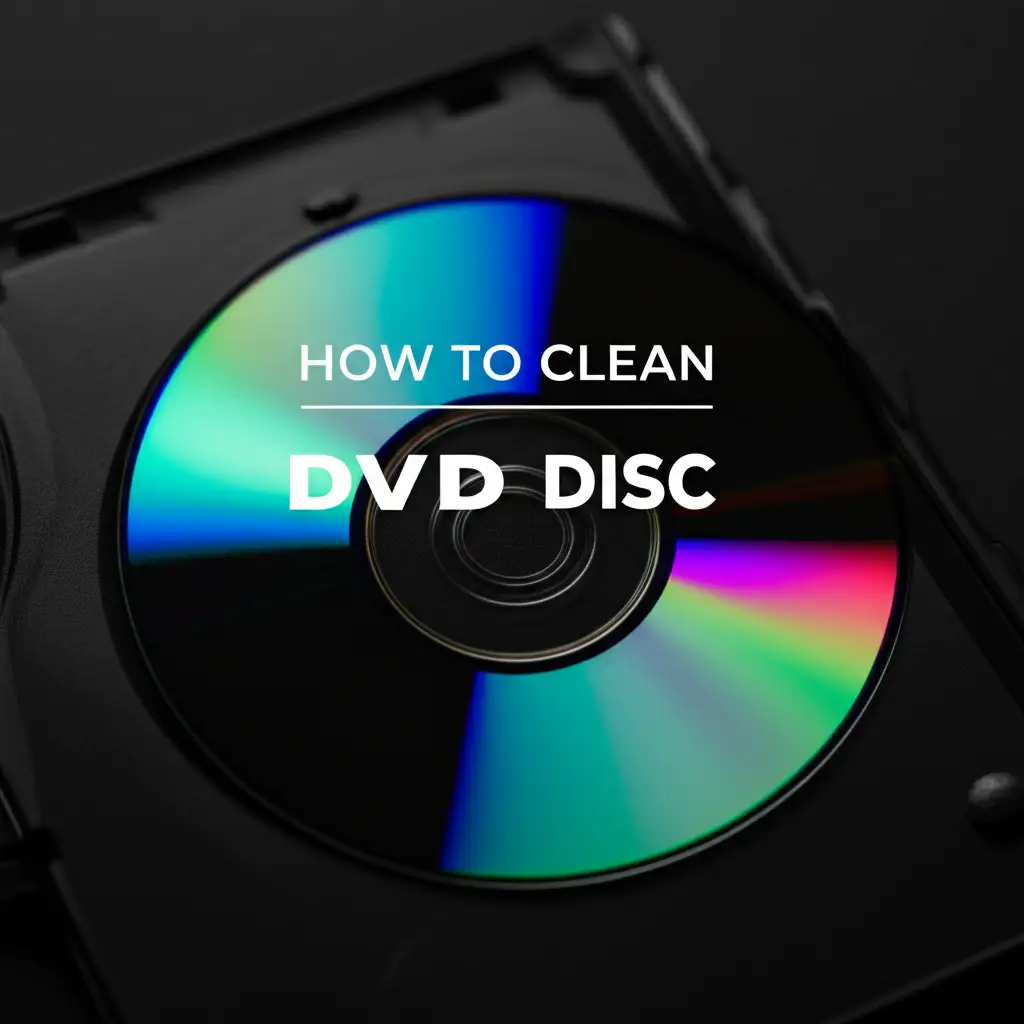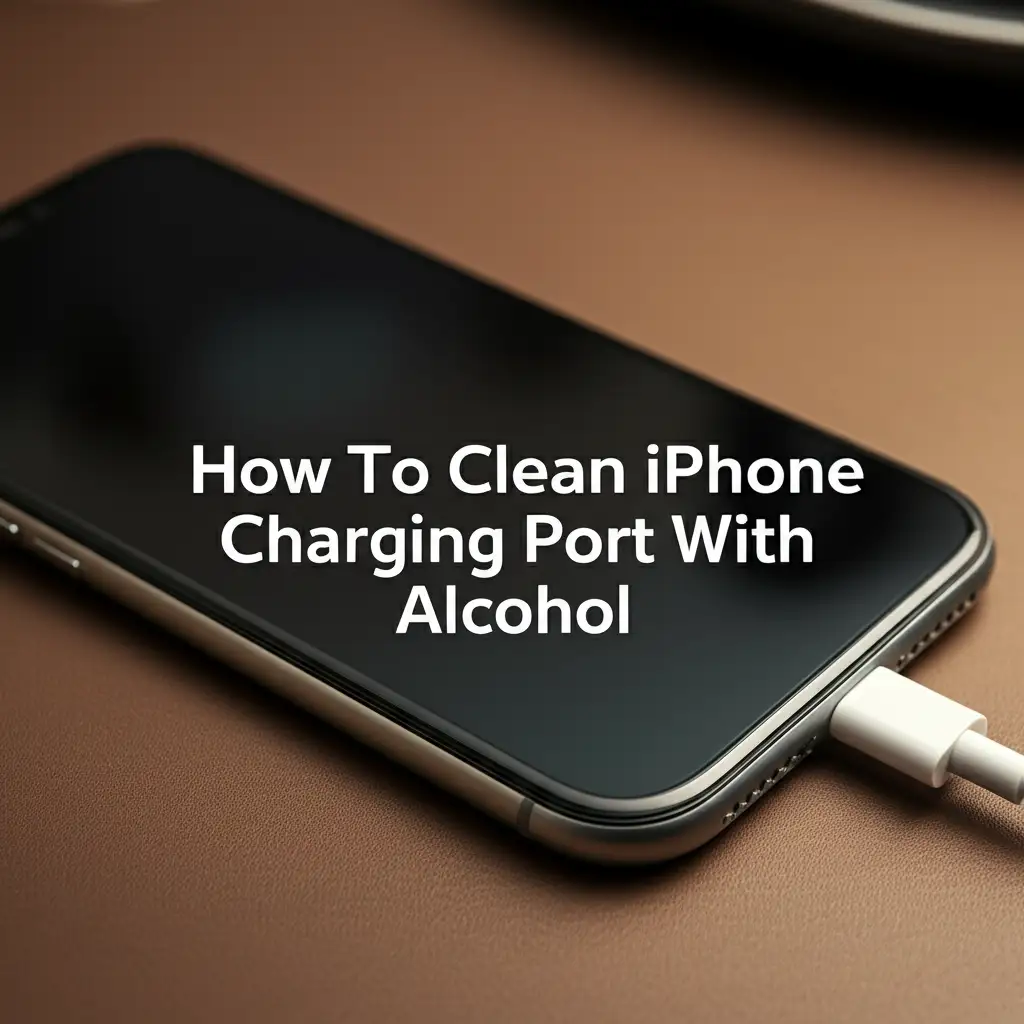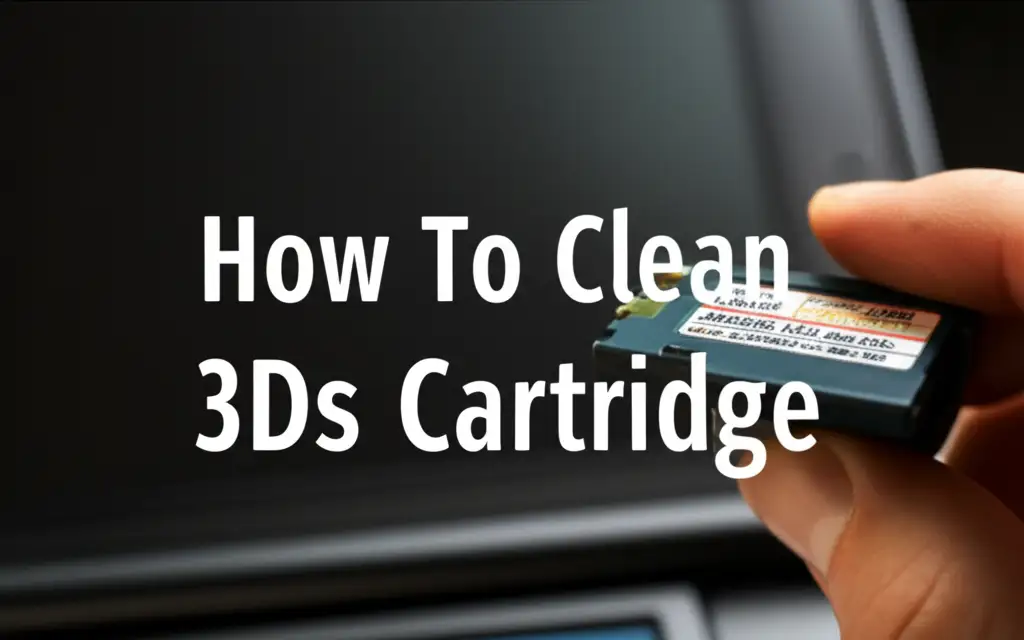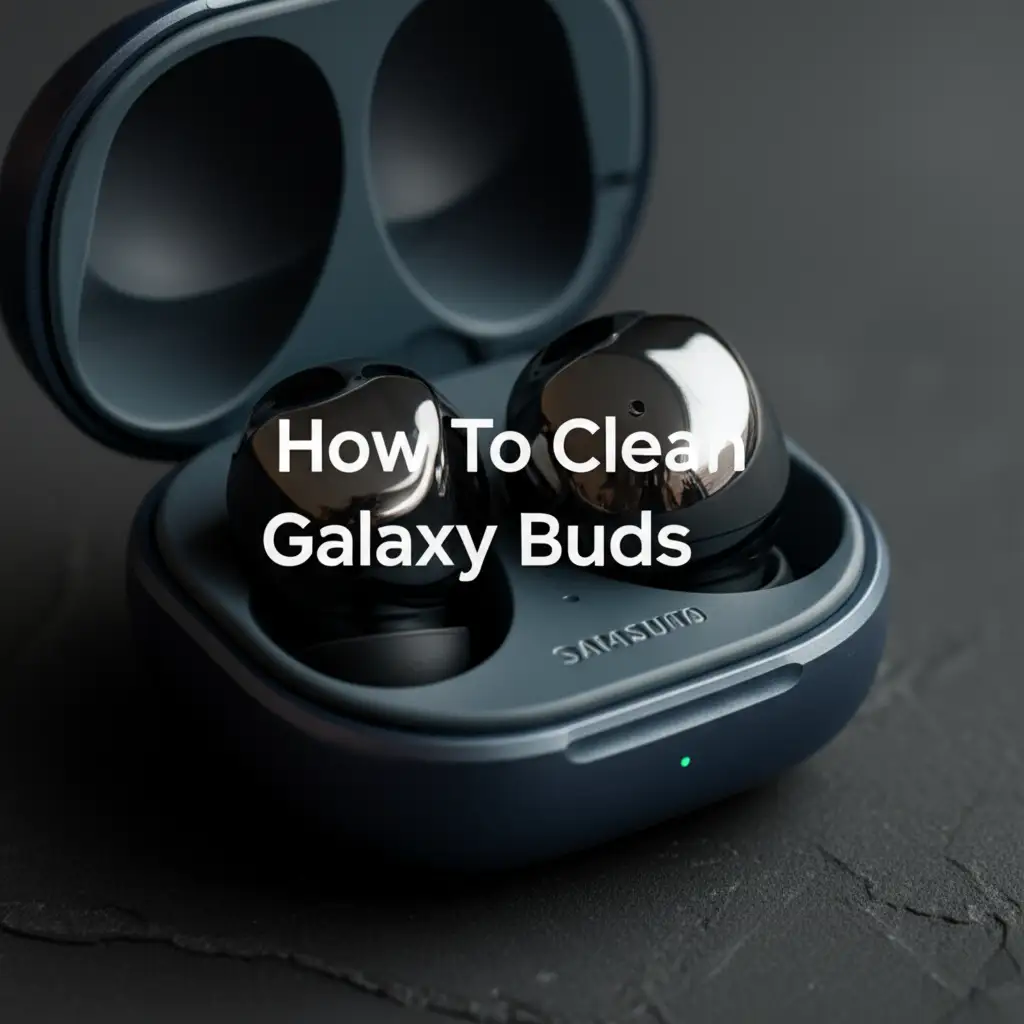· Electronics Maintenance · 23 min read
How To Clean Dvd Disc

How To Clean DVD Disc: Restore Your Media
Do your favorite movies skip? Does that essential software disc refuse to install? Often, the problem is not a broken player. A dirty or scratched DVD disc causes many playback issues. Knowing how to clean a DVD disc properly saves your cherished media. It brings your discs back to life.
In this guide, I will show you how to clean DVD discs. We will cover everything from basic cleaning to tackling stubborn scratches. You will learn about safe cleaning solutions. You will also discover the right tools to use. Proper handling and storage tips are also included. Let’s make your discs play like new again.
Takeaway:
- Always clean DVD discs gently, wiping from the center outwards.
- Use soft, lint-free cloths and appropriate cleaning solutions like distilled water or specialized cleaners.
- Address minor scratches with household items or commercial kits.
- Proper handling and storage prevent future damage.
To effectively clean a DVD disc, gently wipe the playback side from the center outwards using a clean, soft microfiber cloth and a small amount of distilled water or a specialized disc cleaner. Avoid harsh chemicals and circular motions, as these can cause further damage.
Understanding Your DVD Disc: Playback and Protection
Every DVD disc has a specific structure. This structure helps it store data. Understanding it helps you clean the disc correctly. The disc has a clear polycarbonate plastic layer. This layer protects the data. The data layer itself sits underneath this plastic. It reflects a laser beam. This laser reads the information.
The bottom side of the disc is the one that touches the player. This is the side that gets dirty. Dust, fingerprints, and smudges block the laser. Scratches on this surface also deflect the laser. This causes skipping or freezing. Cleaning this surface removes these obstacles. It allows the laser to read the data correctly.
The label side of the disc is different. It usually contains the movie title or game art. This side is more delicate. You should never clean the label side with liquids. Doing so can damage the label or even the data layer. Always focus your cleaning efforts on the shiny, playback side. Handling discs by their edges prevents fingerprints. This simple act reduces cleaning frequency.
Knowing the disc’s parts helps you protect it. The polycarbonate layer is tough, but it is not invincible. Harsh chemicals can cloud it. Abrasive materials can scratch it. Proper cleaning techniques protect this vital layer. They ensure your media lasts longer. This understanding is the first step in effective DVD maintenance.
Essential Tools and Supplies for DVD Disc Cleaning
Gathering the right tools is important before you start. Using the wrong items can damage your DVD discs further. We want to clean the disc, not harm it. Simple household items work well for most cleaning tasks. You might already own many of them. Always have these items ready before you begin.
First, you need a clean, soft cloth. Microfiber cloths are excellent choices. They are lint-free. They also absorb moisture well. Cotton cloths can leave behind fibers. Paper towels are too abrasive. They can create tiny scratches. Avoid any cloth that feels rough. The goal is to be gentle.
Second, consider your cleaning solution. Distilled water is often sufficient for light dust. It leaves no mineral deposits. Isopropyl alcohol works for tougher grime. Choose a 70% concentration. This strength cleans effectively without drying too fast. Specialized disc cleaning solutions are also available. These products are designed specifically for optical media. They are safe to use. You can also use a very mild soap solution. Mix a tiny drop of dish soap with distilled water.
Lastly, you might need cotton swabs. These are good for edges or tight spots. A can of compressed air is also useful. It blows away loose dust particles. Avoid using your breath. Breath contains moisture and tiny particles. These can add to the problem. Having these supplies ready makes the cleaning process smooth.
Safe Cleaning Solutions
Choosing the correct cleaning solution is critical for disc care. Some liquids can ruin a DVD disc. Others clean it effectively. Always use a solution that evaporates cleanly. This prevents residue buildup. Residue can block the laser just like dirt.
Distilled water is the safest option. It is pure. It contains no minerals that can scratch or stain the disc. Use it for light cleaning. Apply a small amount to your cloth, not directly to the disc. This prevents water from getting into the disc’s center hole. Water inside can separate the disc layers.
For fingerprints and greasy smudges, isopropyl alcohol is effective. A 70% solution is ideal. Higher concentrations dry too fast. This can leave streaks. Again, apply it to a cloth first. Wipe gently from the center outwards. Isopropyl alcohol evaporates quickly. It leaves no residue. This makes it a great choice for tougher marks.
Some people use a tiny drop of mild dish soap mixed with distilled water. Ensure the soap is gentle. It should not contain harsh chemicals or moisturizers. Too much soap leaves a sticky film. Always rinse thoroughly with distilled water after using soap. Then dry immediately. Never use window cleaner, bleach, or other harsh household cleaners. These contain ammonia or other chemicals. They can damage the polycarbonate layer. They can also strip away protective coatings.
Recommended Cleaning Cloths
The type of cloth you use directly affects cleaning results. Abrasive materials can cause more harm. They create new scratches. These scratches can be permanent. A soft, non-abrasive cloth is key.
Microfiber cloths are the best choice for cleaning DVD discs. They have tiny fibers. These fibers lift dust and dirt without scratching surfaces. They are also highly absorbent. This helps dry the disc quickly. Make sure the microfiber cloth is clean. A dirty cloth can rub existing debris back onto the disc. This causes scratches. Wash microfiber cloths regularly without fabric softener. Fabric softener can leave a film. This film can transfer to the disc.
A clean, soft cotton cloth can also work. Look for cloths used for glasses or camera lenses. These are typically very soft. Avoid old t-shirts or towels. They might contain lint or small, hard particles. These particles can scratch the disc surface. Always inspect your cloth before use. Check for any debris or hard elements embedded in the fabric.
Never use paper towels or facial tissues. These products are made from wood fibers. These fibers are too rough for delicate plastic surfaces. They can leave micro-scratches. These tiny scratches accumulate over time. They make the disc harder to read. Always opt for the softest material available. This protects your valuable media.
The Gentle Art of Cleaning a Dirty DVD Disc
Cleaning a DVD disc requires a light touch. You want to remove dirt without causing damage. I find that a systematic approach works best. This ensures every part of the disc gets attention. It also prevents new problems. Always work in a clean, dust-free area. This stops new dust from settling on your disc.
Start by inspecting the disc. Hold it up to a light source. Look for dust, fingerprints, or smudges. Note where the dirt is. This helps you focus your cleaning. Always hold the disc by its edges. Never touch the shiny bottom surface. Our skin oils leave fingerprints. These fingerprints become new cleaning targets.
Once you identify the dirty areas, prepare your cleaning solution. Remember, less is more. Apply a small amount of distilled water or cleaning solution to your microfiber cloth. Do not spray or pour liquid directly onto the disc. Liquid can seep into the layers. This can cause permanent damage. A damp cloth is all you need.
Now, gently wipe the disc. Start from the center of the disc. Wipe straight towards the outer edge. Do not wipe in circles. Circular motions can create circular scratches. These scratches are harder for the laser to read. A linear motion is safer. It ensures any new scratches are straight. The laser can often read over straight scratches more easily. Repeat this motion as needed. Use a fresh part of the cloth for each wipe if the disc is very dirty.
After wiping, ensure the disc is dry. Let it air dry completely. Or, gently blot it with a separate, clean, dry microfiber cloth. Make sure no moisture remains. A wet disc can attract more dust. It can also damage your player. This careful process restores playback quality.
Pre-Cleaning Inspection
Before you apply any cleaning solution, inspect the DVD disc carefully. This step helps you understand the type of dirt you are dealing with. It also reveals any existing damage. Knowing this helps you choose the right cleaning method. It also prevents you from making things worse.
Hold the disc by its edges. Tilt it under a good light source. Natural light works best. Look closely at the shiny side. This is the playback side. Are there visible dust particles? Are there smudges from fingerprints or grease? Do you see any dried liquid spills? Different types of dirt require slightly different approaches.
Also, check for scratches. Scratches appear as thin lines. They can be light or deep. Minor surface scratches might clean off. Deeper scratches might need repair. Cleaning will not fix deep scratches. You might need a disc repair kit for those. Note the direction of any scratches. This helps you avoid adding new ones.
A thorough inspection tells you if cleaning is even necessary. Sometimes, a disc looks dirty but plays fine. Other times, a seemingly clean disc skips. This might point to an issue with your player. A good inspection sets the stage for successful cleaning. It is a simple step that saves time and effort.
Hand-Washing Technique
For heavily soiled DVD discs, a gentle hand-washing technique can be very effective. This method uses water to lift dirt. It is often safer than dry wiping for stuck-on grime. But it requires careful execution. Your hands must be clean.
Start by running the disc under lukewarm distilled water. Tap water can leave mineral deposits. Hold the disc by its edges only. Allow the water to rinse away loose dirt. Do not use hot water. Hot water can warp the plastic. Lukewarm water is gentle and effective.
Next, apply a tiny drop of very mild dish soap to your fingertip. Rub this soap gently onto the playback side of the disc. Use a straight motion from the center outwards. Do not scrub hard. The soap helps break down oils and grease. It lifts stubborn grime. Ensure the soap is gentle and does not contain harsh chemicals or moisturizers.
Rinse the disc thoroughly under lukewarm distilled water again. Make sure all soap residue is gone. Soap residue can cause playback issues. It can also attract more dust. Watch for any suds. Continue rinsing until the disc feels clean and no suds remain. This hand-washing method helps revive very dirty discs.
Drying Your DVD Disc
Properly drying your DVD disc is as important as cleaning it. Any moisture left on the disc can cause problems. It can lead to water spots. It can also attract dust and dirt. A wet disc can damage your DVD player’s laser lens. Always ensure the disc is completely dry before reinserting it into the player.
After cleaning, gently blot the disc with a clean, dry microfiber cloth. Again, blot from the center outwards. Do not rub vigorously. Blotting absorbs excess moisture. This reduces the chances of streaks. Use a separate, dry cloth for this step. Your cleaning cloth might still be damp.
The best way to dry a DVD disc is often to let it air dry. Place the disc on a clean, soft surface. A clean microfiber cloth works well. Position it so air can circulate around it. Ensure the room is dust-free. Air drying minimizes contact with surfaces. This further reduces the risk of new scratches.
Do not use paper towels or rough towels for drying. These can leave fibers. They can also scratch the surface. Avoid using heat sources like hair dryers. High heat can warp the disc’s plastic. This makes it unreadable. Patience is key here. Allow the disc to dry completely. A fully dry disc prevents future issues.
Dealing with Stubborn Smudges and Fingerprints
Stubborn smudges and fingerprints are common issues. They happen when we touch the disc’s shiny surface. Oils from our skin transfer to the plastic. These oily marks are hard for the laser to read through. Basic water cleaning might not remove them. Stronger, but safe, solutions are needed for these marks.
Always try gentle methods first. If distilled water and a microfiber cloth do not work, escalate. Isopropyl alcohol is the next step. It is a powerful degreaser. It evaporates quickly. This leaves no residue behind. This makes it ideal for greasy marks.
Apply a small amount of 70% isopropyl alcohol to a clean microfiber cloth. Do not saturate the cloth. It should be damp, not wet. Gently wipe the affected area. Use the same center-to-edge motion. You might need to wipe a few times. Use a fresh section of the cloth for each pass. This ensures you are lifting the grime, not just spreading it around.
For very tough, dried-on smudges, a slightly damp cotton swab can help. Dip the swab in isopropyl alcohol. Gently roll it over the smudge. Then, follow up with the microfiber cloth. Always ensure the disc is completely dry before use. Tackling these smudges properly restores clear playback. It prevents frustration when you want to enjoy your media.
Using Isopropyl Alcohol Safely
Isopropyl alcohol is a valuable tool for cleaning DVD discs. It dissolves oils and greases effectively. But, you must use it safely. Improper use can cause damage. The goal is to clean the disc, not harm it. Always choose the correct concentration.
Opt for 70% isopropyl alcohol. This concentration is widely available. It contains enough water to prevent rapid drying. Rapid drying can leave streaks. Higher concentrations, like 90% or 99%, dry too fast. They might also be too harsh for the disc’s coating. A 70% solution strikes the right balance.
Never pour isopropyl alcohol directly onto the DVD disc. Always apply it to your cleaning cloth first. A small amount is enough. The cloth should be damp, not dripping. This prevents liquid from seeping into the disc layers. Seepage can cause delamination. This is permanent damage.
When wiping, use gentle, straight strokes. Move from the center hub to the outer edge. Avoid circular motions. Alcohol evaporates quickly. So, work efficiently. Ensure proper ventilation if you are cleaning many discs. Alcohol fumes can be strong. Once cleaned, let the disc air dry completely. Isopropyl alcohol evaporates without leaving residue. This makes it a great choice for a clear finish.
White Vinegar Solutions
White vinegar can also be a surprisingly effective cleaner for DVD discs. Its mild acidic nature helps break down grime. It is a natural option. However, it requires careful dilution and use. You do not want the vinegar to be too strong. It can be particularly useful for film or residue that alcohol struggles with.
To prepare a vinegar solution, mix equal parts white vinegar and distilled water. For example, use one tablespoon of vinegar and one tablespoon of distilled water. This dilution makes the solution gentle enough for discs. Always use white vinegar, not apple cider or other types. Other vinegars might contain sugars or pigments. These can leave sticky residues.
Apply the diluted vinegar solution to a clean microfiber cloth. Lightly dampen the cloth. Do not soak it. As with other solutions, never apply liquid directly to the disc. This protects the disc’s inner layers. Hold the disc by its edges.
Gently wipe the disc from the center outwards. Use straight, light strokes. The vinegar helps cut through smudges. After cleaning, it is crucial to rinse the disc. Use a separate cloth dampened with pure distilled water. This removes any vinegar residue. Vinegar, if left on the disc, can potentially etch the plastic over time. Dry the disc thoroughly with a clean, dry microfiber cloth or air dry it. For more tips on using vinegar for cleaning, you can learn how to clean glass with vinegar. This ensures a clean, residue-free surface.
Addressing Scratches on Your DVD Discs
Scratches are perhaps the most common problem for DVD discs. They can make a disc unplayable. The laser struggles to read past these imperfections. Not all scratches are fatal. Minor surface scratches can often be repaired. Deeper scratches are harder to fix. Knowing the difference helps you decide your next steps.
First, identify the type of scratch. Hold the disc up to a light. If the scratch feels rough to your fingernail, it is deep. These are very challenging to fix. If it looks like a faint line on the surface, it is likely minor. Minor scratches are usually the ones you can repair at home. Remember, discs read from the bottom layer up. So, even tiny scratches on the surface can disrupt the laser.
There are a few common methods for scratch repair. One popular home remedy involves toothpaste. Another option is a commercial disc repair kit. These kits use a buffing compound. They smooth out the disc surface. Both methods aim to fill or smooth the scratch. This allows the laser to glide over it.
Before attempting any scratch repair, clean the disc first. Remove all dust and smudges. This ensures you are working only on the scratch. Dirt can interfere with the repair process. Always test any repair method on a less valuable disc first. This builds confidence. It also prevents damage to your favorite media.
Toothpaste Method for Minor Scratches
The toothpaste method is a popular home remedy for minor DVD disc scratches. It works by using the mild abrasives in toothpaste. These abrasives gently polish the disc surface. They smooth out the edges of a scratch. This allows the laser to read past the damage. This method is best for very light, shallow scratches.
Choose a non-gel, non-abrasive toothpaste. White, regular toothpaste works best. Avoid toothpastes with special whitening agents or scrubbing beads. These can be too harsh. A small dab of toothpaste is all you need. About a pea-sized amount is sufficient for one disc.
Apply the toothpaste directly to the scratched area. Use a clean, soft microfiber cloth. Gently rub the toothpaste into the scratch. Use straight motions, from the center of the disc to the outer edge. Do not use circular motions. Apply very light pressure. You are polishing, not scrubbing. Continue rubbing for about 30 seconds to a minute.
After rubbing, rinse the disc thoroughly under lukewarm distilled water. Ensure all toothpaste residue is gone. Any remaining paste can cause playback issues. Dry the disc completely with a separate, clean, dry microfiber cloth. Or, let it air dry. Test the disc in your player. This method works for many minor skips.
Commercial Disc Repair Kits
For scratches that the toothpaste method cannot fix, commercial disc repair kits offer a more robust solution. These kits are specifically designed for optical media. They typically contain a buffing solution and special applicators. They work by gently resurfacing the disc. This fills in or smooths out scratches.
Many types of kits exist. Some are manual. You apply a compound and buff by hand. Others are automated. They use a small machine to spin and polish the disc. Automated kits are often more effective for deeper scratches. They provide consistent pressure. This ensures an even polish.
When using a commercial kit, always follow the manufacturer’s instructions. Each kit has unique steps. Generally, you apply a small amount of repair solution to the disc. Then, you use a special pad or machine to buff the surface. The goal is to create a smoother path for the laser.
Commercial kits can be very effective for moderate scratches. They are often safer than improvised methods. They are designed for the specific plastic used in DVD discs. However, they cannot fix all damage. Deep gouges that go through the data layer are usually beyond repair. Consider this an investment for preserving your disc collection. For issues with the device itself, learning how to clean a Wii disc reader can also be helpful.
Proper Handling and Storage for DVD Longevity
Cleaning and repairing discs are important. But preventing damage is even better. Proper handling and storage habits extend the life of your DVD discs significantly. These simple steps protect your media collection. They ensure your discs remain in good playing condition for years. This saves you from future cleaning headaches.
Always hold a DVD disc by its edges or by the center hole. Never touch the shiny bottom surface. Your fingers contain oils. These oils transfer to the disc. They create smudges and fingerprints. These marks are hard for the laser to read. Even small smudges can cause skipping. Make this a habit every time you pick up a disc.
When not in use, store your discs properly. The original jewel cases or DVD cases are ideal. They protect the disc from dust, scratches, and light. If you use disc wallets or binders, ensure they have soft, non-abrasive sleeves. Cheap, rough sleeves can scratch discs over time. Avoid stacking discs without protection. Pressure can cause warping or scratches.
Store discs in a cool, dry place. Avoid direct sunlight. Sunlight contains UV rays. These rays can degrade the disc’s data layer over time. Extreme temperatures, both hot and cold, can warp the disc. Keep discs away from heating vents or windows. A stable room temperature is best. Humidity can also be an issue. High humidity can cause mold or mildew growth. This can damage the disc’s surface. These simple habits protect your media collection.
Best Practices for Handling
How you handle your DVD discs impacts their lifespan. A casual grab can cause permanent damage. Developing good habits saves your discs. It prevents many common problems before they start. I always try to follow these simple rules.
When taking a disc out of its case, press down gently on the center hub. This releases the disc without bending it. Bending can cause cracks. Cracks are often irreparable. Once released, grasp the disc by the outer edge. Use your thumb on one side and fingers on the other. Your fingers should not touch the data surface.
When inserting or removing the disc from a player, be gentle. Slide it in smoothly. Do not force it. Rough insertion can scratch the disc. It can also damage the player’s mechanism. Always ensure the disc tray is fully extended before placing or removing a disc.
Never place a disc on a hard or dirty surface. A table might seem clean. But it can have tiny dust particles. These particles can cause scratches when the disc moves. Use a soft, clean cloth as a temporary resting place if needed. Or, put the disc directly back into its case. These practices minimize contact with damaging elements. They keep your discs pristine. For maintaining other delicate electronics, understanding how to clean a Blu-ray disc also uses similar careful handling.
Ideal Storage Conditions
Storing your DVD discs correctly protects them from the elements. Environmental factors can degrade discs over time. Proper storage ensures your media remains playable for decades. It is an investment in your entertainment collection.
Store DVD discs vertically, like books on a shelf. This prevents pressure buildup. Stacking discs horizontally can cause warping. It can also lead to scratches. This is especially true if cases are not perfectly aligned. Vertical storage distributes weight evenly.
Maintain a consistent room temperature. Extreme fluctuations are bad for discs. Temperatures between 65-75°F (18-24°C) are ideal. Avoid storing discs in attics or basements. These areas often experience wide temperature swings. They also tend to have higher humidity.
Humidity is a major concern. High humidity can encourage mold or mildew growth. This can damage the disc surface. Keep humidity levels between 30-50%. A dehumidifier can help if your area is naturally humid. Keep discs away from direct sunlight and strong artificial light. UV light can break down the dyes and plastic over time. A dark, stable environment prolongs disc life. A dedicated media cabinet offers the best protection.
When to Seek Professional Help or Replace a DVD
Sometimes, cleaning and home repairs are not enough. Some DVD disc damage is too severe. Knowing when to stop trying to fix a disc saves you time and effort. It also tells you when to consider professional help or replacement. This helps manage expectations for your media collection.
First, identify the severity of the damage. If a scratch is deep enough to see light through it, the disc is likely beyond repair. This means the data layer is compromised. No amount of polishing can fix such damage. Similarly, if the disc is cracked, warped, or shows signs of delamination (layers separating), it is probably unrecoverable. These types of damage are usually permanent.
Professional disc repair services exist. They use industrial-grade machines. These machines can resurface discs to a high degree. They can often fix scratches that home kits cannot. However, these services cost money. Weigh the cost against the value of the disc. Is it a rare movie? Is it a game you cannot easily replace? For common, inexpensive titles, replacement might be more cost-effective.
Consider replacing the DVD disc if:
- The disc shows severe, deep scratches or cracks.
- It is warped.
- It has signs of delamination.
- Home cleaning and repair methods have failed repeatedly.
- The disc is readily available and inexpensive to buy new.
Replacing a damaged disc is often the simplest solution. This is especially true for mass-produced titles. It saves you the frustration of trying to fix the unfixable. It also ensures you get a perfectly working copy. Sometimes, a fresh start is the best solution.
FAQ Section
Q1: Can I use window cleaner to clean my DVD disc?
No, never use window cleaner. Most window cleaners contain ammonia or other harsh chemicals. These chemicals can damage the polycarbonate plastic of the DVD disc. They can also strip away protective coatings. This can lead to permanent damage and make the disc unreadable. Stick to distilled water or isopropyl alcohol.
Q2: What should I do if my DVD disc has mold?
If your DVD disc has mold, gently wipe it with a microfiber cloth slightly dampened with distilled water. If the mold persists, use a small amount of diluted white vinegar (50% vinegar, 50% distilled water). Always wipe from the center outwards. Rinse thoroughly with distilled water and dry completely. For stubborn mold, you might need a professional service.
Q3: Can I clean my DVD disc with rubbing alcohol?
Yes, you can use rubbing alcohol, which is typically 70% isopropyl alcohol. This concentration is safe and effective for cleaning DVD discs. Apply a small amount to a clean microfiber cloth, then wipe the disc from the center to the edge. It helps remove fingerprints and smudges without leaving residue.
Q4: How do I know if my DVD disc is permanently damaged?
A DVD disc is likely permanently damaged if it has deep scratches where you can see through the data layer, visible cracks, or signs of delamination (layers separating). If the disc is warped, it is also likely beyond repair. In these cases, cleaning or home repair methods will probably not work.
Q5: Does toothpaste really fix scratches on DVD discs?
Toothpaste can help fix very minor, shallow scratches on DVD discs. The mild abrasives in non-gel, non-whitening toothpaste can gently polish the disc surface. This helps smooth out the scratch. It makes the scratch less disruptive to the laser. It does not work for deep scratches.
- DVD cleaning
- disc repair
- media preservation
- home entertainment
- scratch removal




